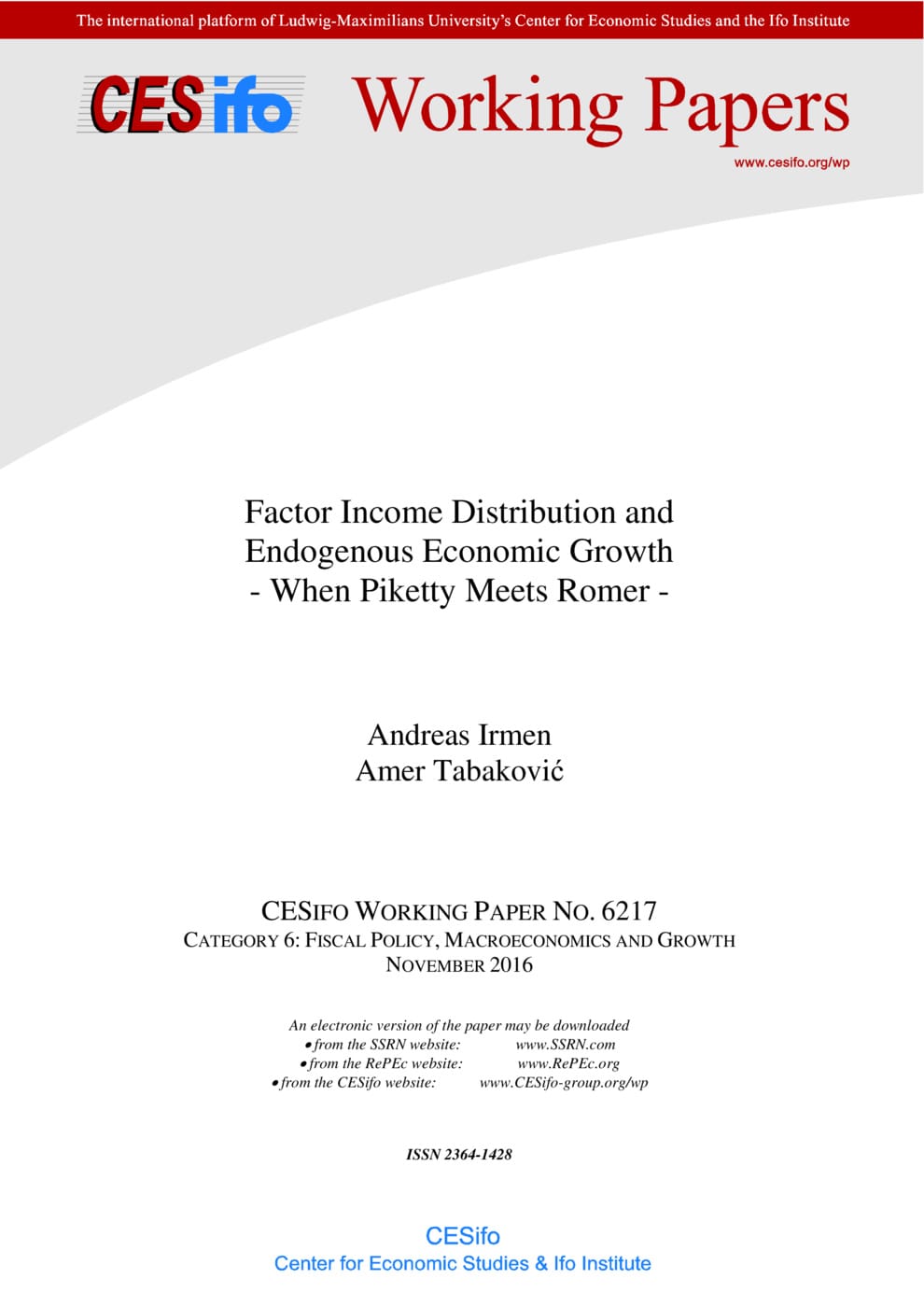Factor Income Distribution and Endogenous Economic Growth - When Piketty Meets Romer -
CESifo, Munich, 2016
CESifo Working Paper No. 6217

We scrutinize Thomas Piketty’s (2014) theory concerning the relationship between an economy’s long-run growth rate, its capital-income ratio, and its factor income distribution put forth in his recent book Capital in the Twenty-First Century. We find that a smaller long-run growth rate may be associated with a smaller capital-income ratio. Hence, the key implication of Piketty’s Second Fundamental Law of Capitalism does not hold. In line with Piketty’s theory a smaller long-run growth rate may go together with a greater capital share. However, the mechanics behind this result are the opposite of what Piketty suggests. Our findings obtain in variants of Romer’s (1990) seminal model of endogenous technological change. Here, both the economy’s savings rate and its growth rate are endogenous variables whereas in Piketty’s theory they are both exogenous parameters. Including demographic growth in the spirit of Jones (1995) shows that a smaller growth rate of the economy may imply a lower capital share contradicting a central claim in Piketty’s book.
Fiscal Policy, Macroeconomics and Growth
Public Finance